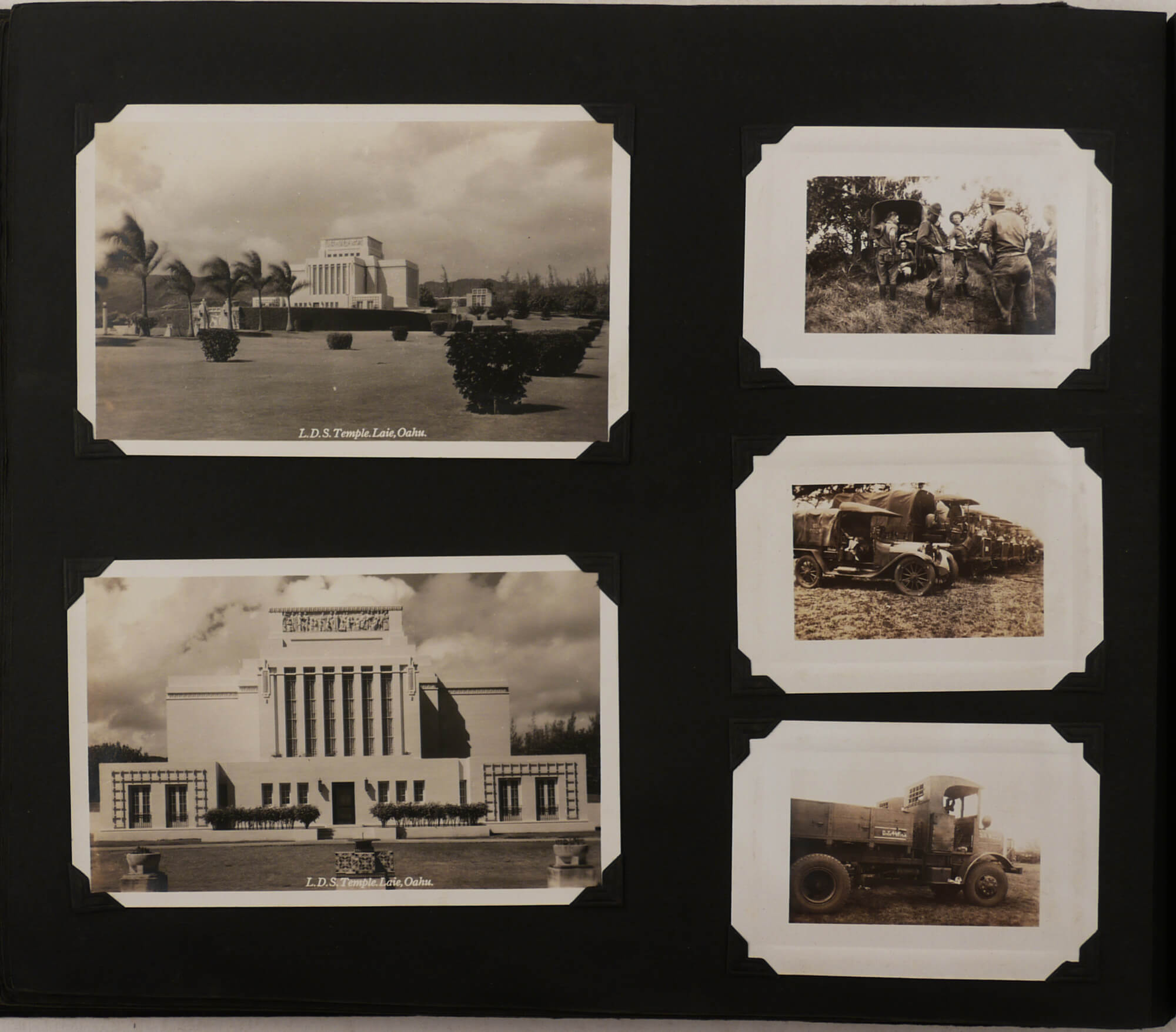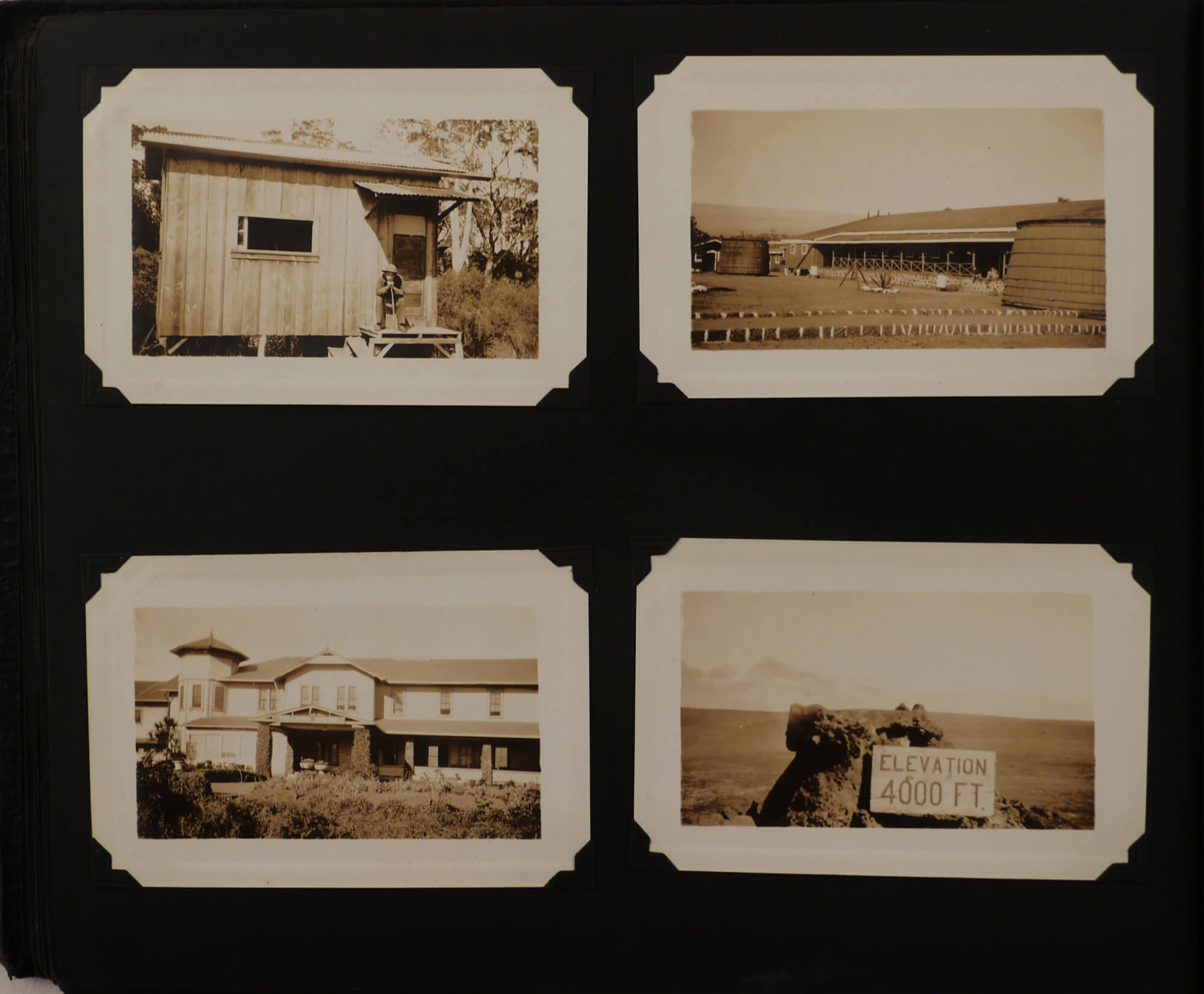






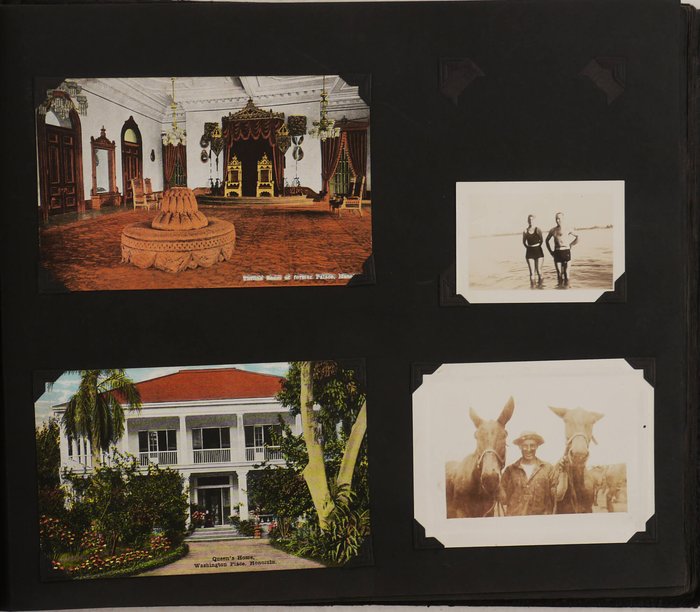







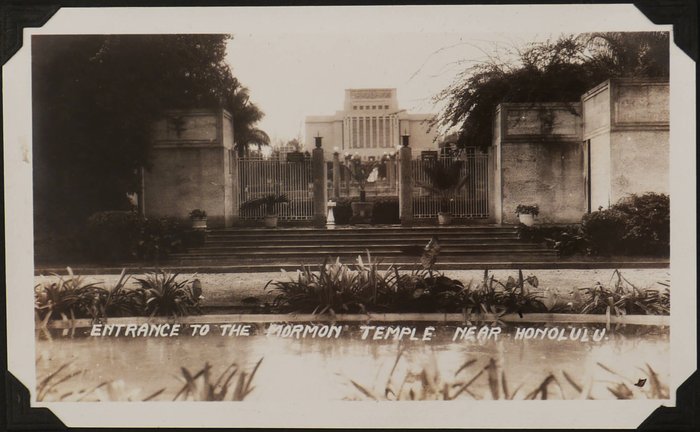





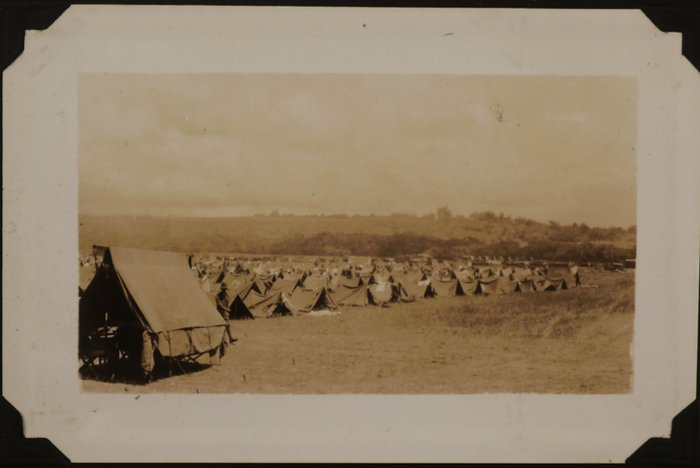




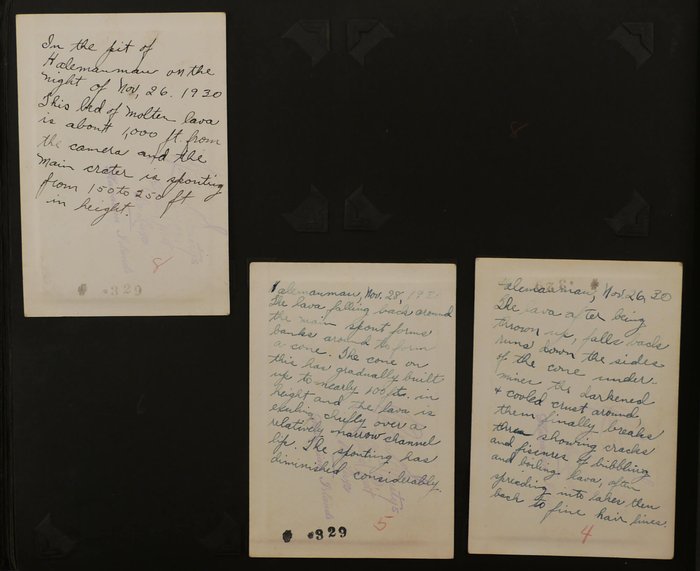











#P57
Ca. 1920-1930s
Oblong Folio (ca. 26x33 cm). 45 black stock leaves. With over 280 mounted original gelatin silver photographs from ca. 11x16 cm (4 ¾ x 6 ½ in) to ca. 5,5x8 cm (2 ¼ x 3 ¼ in). Several photos captioned in negative, ca. thirty with period ink captions on verso. Many photos bear ink stamp “Chateau Sauty’s Studio Print De Luxe, Hawaiian Islands” on verso. With eight mounted real photo postcards ca. 8,5x13,5 cm (3 ½ x 5 ¼ in). With eleven mounted colour printed postcards with Hawaiian views. With four negatives of family photos ca. 6x9 cm (2 ¼ x 3 ¾ in) loosely inserted. Period brown faux leather album fastened with string. Binding rubbed on extremities, a few images mildly faded, several photos possibly previously removed, but overall a very good album of interesting photos.
Interesting private album compiled by an American soldier (most likely, a sergeant) during his service in the US Army Hawaiian Division in the 1930s. Over two hundred photos illustrate his Hawaiian service in the 1930s, and about seventy photos portray his family and friends in Illinois in the 1920s.
Most of the “Hawaiian” photos focus on the Oahu Island and the Schofield Barracks military station. There are interesting views of the entrance to the “Hawaiian Division, Headquarters” (the sign above the gate), the “Boxing Bowl” amphitheatre, a chapel and several other buildings of the Schofield Barracks, military batteries (one sign reads “Btry. D. 11th F.A. 3rd Sec.”), rows of military trucks, a portrait of a soldier with a violin posing in front of a wooden building with “The Infantry Motor Section” sign, etc. A group of photos shows tent camps and soldiers on reviews and drills. There are also scenes with soldiers playing American football, and numerous portraits of them posing in front of their tents, next to military trucks, on the beach, in front of scenic views, during a friendly party at the camp with three ladies, etc.
Photos captioned in negative show “Buddhist Temple, Honolulu,” “Entrance to the Mormon Temple near Honolulu” (there are also five real photo postcards depicting the same Laie Hawaii Temple from different angles), “Honolulu harbour from Aloha tower,” “Summit Pali Road,” “Hairpin Turn, Pali Highway,” “Cane growing near the sugar mill,” and others. One of the real photo postcards shows U.S.A.T. “Republic” which apparently was the transport that brought the album’s compiler to Hawaii.
Over fifty photos at the rear show the sites of Hawaii Volcanoes National Park which the compiler apparently visited during his stay at the Kilauea Military Camp. Some photos are supplemented with detailed captions on verso and include several panoramas of the Kilauea crater, views of the Little Beggar volcano, the Volcano House, numerous park signboards, “house and buildings of a cattle ranch close by to Kilauea Military Camp,” “a view from the interior of the Thurston lava tube, looking towards the entrance,” “the lava flow of 1873 can be seen just beyond this giant Koa,” “a good example of the type of lava known as Pahochoe,” “looking down through a chasm in the southwest lip of Kilauea onto the floor of Kilauea with the crater of Halemaumau visible three-quarters of a mile away.” There are also portraits of the compiler (apparently) and his friends (two identified as “Lincoln Waldron” and “Sgt. Chas. A. Brenaman”) posing in front of “the signboard with Halemaumau,” “at the fern jungle,” “at the Pali Aloha on the edge of Kilauea,” “sitting near the steam cracks on the edge of Halemaumau,” “in the midst of the disrupted area of the 1921 flow at the south end of Kilauea,” on top of “a tree along the route to Bird Park. Been pretty well mistreated by the weather,” etc. Three photos of night lava flow observed by the compiler “in the pit of Halemaumau on the night of Nov. 26, 1930” are thoroughly annotated on verso. One of the notes: “the lava after being thrown up, falls back, runs down the sides of the cone, undermines the darkened & cooled crust around, then finally breaks through showing cracks and fissures of bubbling and boiling lava, after spreading into lakes, then back to fine hair lines.”
Of the earlier family photos quite interesting is a series of a dozen photos of Chicago, taken in April 1924; most of them are captioned on verso. Some of the captions: “Notice the many different teams playing at once. This is a regular sight to see every Sunday at Lincoln Park” (baseball games); “One of the modern busses on the north side. Coy drives one like this, also Lloyd Smith, Ms. Nicol’s brother;” “This is the north-west corner of the Drake Hotel, just beyond is the lake;” “Polar bears in Lincoln Park. How should you like to be in the cage with them? To the left are eight other cages with Grisley and brown bears;” “This is one of the large hotels here in Chicago. This is the Drake Hotel, where the broadcasting station WDAP is located. Look closely on top and you can make out a few of the wires;” “This is one of the motor boat harbors on the north side of Lincoln Park. The Bridge to the right is not opened for traffic yet;” “These are Easter flowers in Lincoln Park.” Overall a nice collection of original photos illustrating American military service in Hawaii in the 1930s.













